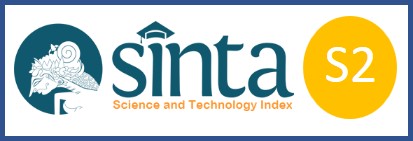Electrical Demand Analysis on Households and Industry in Indonesia
Downloads
This research aims to determine the response of the household sector and industrial sector to electricity demand when there are changes in prices and income. The influence of price and income on electricity demand from both sectors can be seen through their elasticity. The approach used in this study is panel data from 33 provinces in Indonesia for the 2010-2020 time period. Panel data regression estimation techniques are used in this study to estimate the elasticity value. The results show that price elasticity in the household and industrial sectors is negative inelastic, but price does not significantly influence household electricity demand. Unlike price, income elasticity has a much higher value and positively and significantly influences electricity demand in both sectors. The number of customers, which reflects the increasing electrification ratio and population growth, significantly impacts electricity demand in the household and industrial sectors. Based on the results, it was found that the number of customers most influences electricity demand in the household sector. At the same time, income has the most significant influence on electricity demand in the industrial sector.
Agustin, R., & Wikarya, U. (2019). Pengaruh Kebijakan Tariff Adjustment Listrik terhadap Konsumsi Listrik Rumah Tangga di Indonesia [The Influence of the Electricity Tariff Adjustment Policy on Household Electricity Consumption in Indonesia]. Jurnal Kebijakan Ekonomi, 15(2).
Arisoy, I., & Ozturk, I. (2014). Estimating industrial and residential electricity demand in Turkey: A time varying parameter approach. Energy, 66. 959-964.
Arnaz, M. Z. (2018). The Aggregate and Residential Electricity Demand in Indonesia. Jurnal Ekonomi dan Pembangunan, 26(1). 1-20
Badan Pengkajian dan Penerapan Teknologi (BPPT). (2020). Pengkajian Industri Proses dan Energi (PPIPE) Badan Pengkajian dan Penerapan Teknologi (BPPT).
Boogen, N., Datta, S., & Filippini, M. (2017). Dynamic models of residential electricity demand: Evidence from Switzerland. Energy Strategy Reviews, 18, 85-92.
Burke, P. J., & Kurniawati, S. (2018). Electricity subsidy reform in Indonesia: Demand-side effects on electricity use. Energy Policy, 116, 410-421.
Campbell, H. F., & Brown, R. P. C. (2003). Benefit-cost analysis: financial and economic appraisal using spreadsheets. Cambrige: Cambridge University Press.
Cialani, C., & Mortazavi, R. (2018). Household and industrial electricity demand in Europe. Energy Policy, 122, 592–600.
Csereklyei, Z. (2020). Price and income elasticities of residential and industrial electricity demand in the European Union. Energy Policy, 137, 111079.
Egelioglu, F., Mohamad, A. A., & Guven, H. (2001). Economic variables and electricity consumption in Northern Cyprus. Energy, 26(4), 355-362.
Gautam, T. K., & Paudel, K. P. (2018). Estimating sectoral demands for electricity using the pooled mean group method. Applied Energy, 231, 54-67.
Hu, Z., & Hu, Z. (2013). Electricity Economics: Production Functions with Electricity. Berlin: Springer Berlin Heidelberg
International Energy Agency (IEA). (2020). Electricity Market Report.
Ministry of Energy and Mineral Resources Directorate General of Electricity. (2020). Statistik Ketenagalistrikan Tahun 2020 [2020 Electricity Statistics]. Jakarta: Sekretariat Direktorat Jenderal Ketenagalistrikan. https://gatrik.esdm.go.id/assets/uploads/download_index/files/8f7e7-20211110-statistik-2020-rev03.pdf
Khan, M. A., & Abbas, F. (2016). The dynamics of electricity demand in Pakistan: A panel cointegration analysis. 65, 159–1178.
Mulyani, D., & Hartono, D. (2018). Pengaruh Efisiensi Energi Listrik pada Sektor Industri dan Komersial terhadap Permintaan Listrik di Indonesia [The Influence of Electrical Energy Efficiency in the Industrial and Commercial Sectors on Electricity Demand in Indonesia]. Jurnal Ekonomi Kuantitatif Terapan Kuantitatif Terapan, 11(1), 1-7.
National Energy Council. (2019). Indonesia Energy Outlook. Jakarta: Secretariat General of the National Energy Council.
Nicholson, W., & Snyder, C. (2010). Intermediate Microeconomics and Its Application (11th ed.). Mason: Cengage Learning.
Perloff, J. M. (2014). Microeconomics: Theory & Appications With Calculus Perloff (3rd ed.). Boston: Pearson Education, Inc.
PLN. (2021). Company Profile. https://web.pln.co.id/en/about-us/company-profile
Saha, D., & Bhattacharya, R. N. (2018). An analysis of elasticity of electricity demand in West Bengal, India: Some policy lessons learnt. Energy Policy, 114, 591–597.
Samuelson, P. A., & Nordhaus, W. D. (2009). Economics (19th ed.). New York: McGraw-Hill.
Silva, S., Soares, I., & Pinho, C. (2017). Electricity demand response to price changes: The Portuguese case taking into account income differences. Energy Economics, 65, 335–342.
Uhr, D. d., Chagas, A. L., & Uhr, J. G. (2019). Estimation of elasticities for electricity demand in Brazilian households and policy implications. Energy Policy, 129, 69-79.
Wooldridge, J. M. (2016). Introductory Econometrics (6th ed.). Boston:Cengage Learning.
World Bank. (2022). Bank Dunia di Indonesia: Ikhtisar [World Bank in Indonesia: Overview]. https://www.worldbank.org/in/country/indonesia/overview
Copyright (c) 2024 Margareth Kartika, Nur Aini Hidayati

This work is licensed under a Creative Commons Attribution-ShareAlike 4.0 International License.
JIET (Jurnal Ilmu Ekonomi Terapan) (p-ISSN: 2541-1470; e-ISSN: 2528-1879) is licensed under a Creative Commons Attribution-ShareAlike 4.0 International License
Authors who publish with JIET (Jurnal Ilmu Ekonomi Terapan) agree to the following terms:
- The journal allows the author to hold the copyright of the article without restrictions.
- The journal allows the author(s) to retain publishing rights without restrictions
- The legal formal aspect of journal publication accessibility refers to Creative Commons Attribution ShareAlike 4.0 International License (CC BY-SA).












